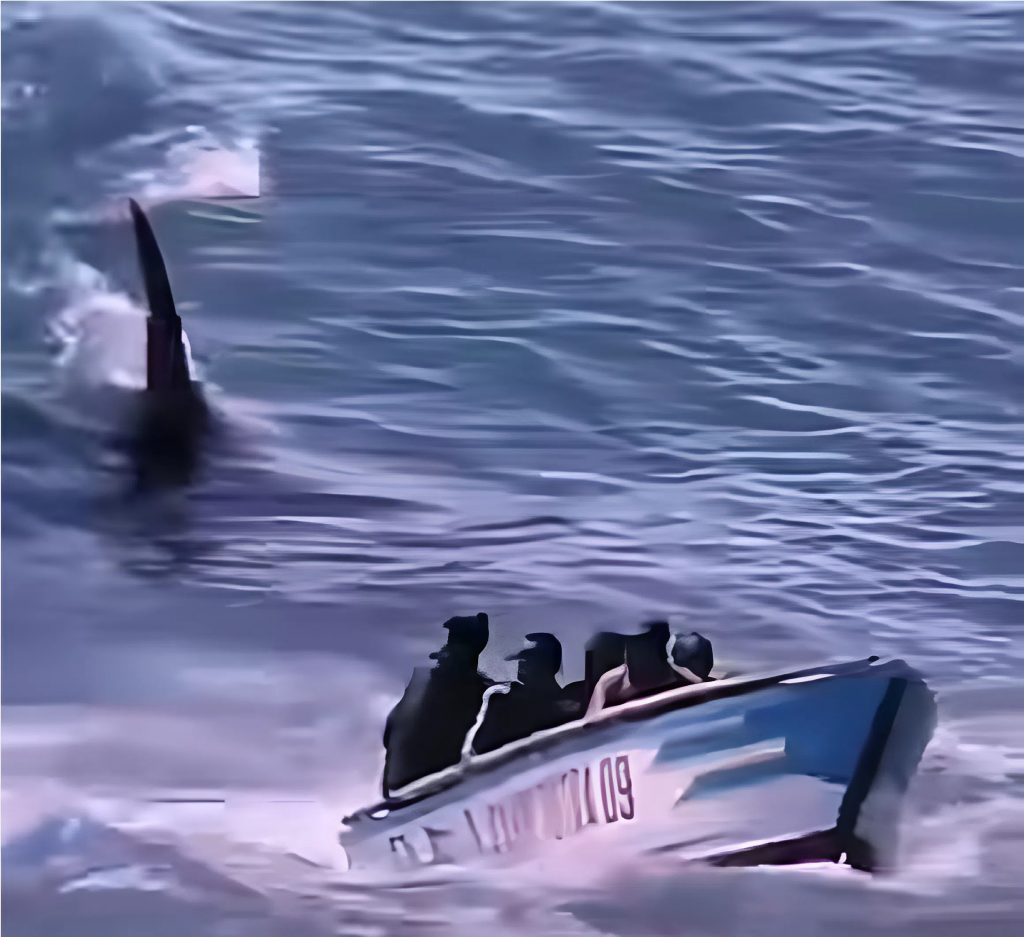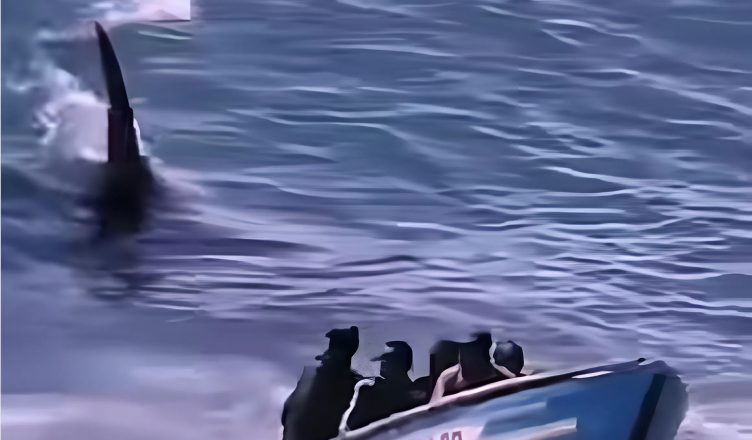There were six of them. Young, determined, hardened by the sea. They were on a patrol boat, performing a routine sweep off the coast in an area known for its rich marine biodiversity. The sea was calm, the engine purred steadily, and conversations on board were lazily drifting toward weather and lunch.
Then it changed. It started with a shadow.
At first, one of them noticed something odd — the water behind the boat seemed unusually disturbed. He turned and froze: about fifty meters behind them, a tall black dorsal fin was slicing through the surface. But this wasn’t a dolphin.
This was a giant.
When the Ocean Wakes Up
They realized immediately — it was an orca. But it wasn’t just any orca. This one was massive. Estimates placed it at nearly nine meters in length. A black-and-white missile moving beneath the surface with eerie precision. It followed their course, sometimes getting closer, sometimes drifting away — but never disappearing.
«Is it following us?» one of the men asked.
No one answered.
The motor groaned louder as they pushed the speed to its limit. The boat bounced violently over the waves, and the men gripped the railings tightly. But the orca didn’t fall behind. It played with them, leaping out of the water, diving back in, always there.
Predator’s Game or Something More?
At first, they hoped it was simple curiosity. Orcas are intelligent and often approach boats out of interest. But this behavior didn’t match any known patterns. The animal maneuvered too deliberately, too strategically — as if testing boundaries. As if it had a purpose.
One crew member, a former marine biologist, noticed something unusual — a scar running along the dorsal fin. A faded mark, like a healed wound. It triggered a memory: studies of so-called «vengeful orcas,» individual whales that had been injured in human encounters and later displayed hostile or territorial behavior.
Could this be one of them?
The Incident No One Talked About
Later investigation revealed something disturbing. Just a week prior, in the same waters, a fishing vessel had been caught using illegal acoustic devices to scare away marine mammals. Several orcas were injured. Among them, one had been cataloged by researchers — they’d named her Raksa.
Raksa had a distinctive dorsal scar.
Now everything made sense. The orca following the patrol boat was her. But what was she doing? Was she retaliating? Tracking? Watching?

The Unspoken Language of the Deep
The chase lasted over 30 minutes. During that time, Raksa never struck the boat, never directly threatened the crew — but she also never left them alone. She leapt near the hull, dived under it, kept pace like a shadow with eyes.
When the boat finally turned back toward shore, the orca gradually slowed. She made one final arc in the water, as if confirming that they were retreating, and then slipped into the depths.
«She let us go,» whispered one of the crew, pale and trembling. «Or maybe she warned us.»
What Was This Encounter Really About?
The event ignited a storm of discussion among scientists, journalists, and marine conservationists. Some suggested territorial behavior. Others saw a calculated warning. A few believed it was a form of communication — Raksa showing them: We know what you’re doing. We remember.
While experts debated, one question loomed larger than all the others: how much do we really understand about ocean predators? These creatures live in a world of layered perception, memory, and strategy far beyond our assumptions. This wasn’t just curiosity. This may have been a message.
A message that the ocean is watching.
And it remembers.
